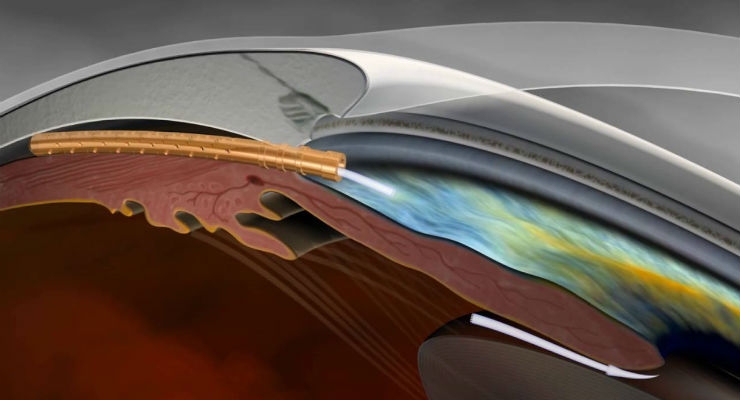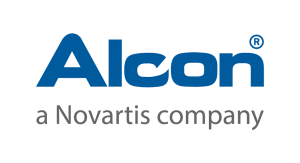
CyPass Micro-Stent
FAQ
Frequently Asked Questions
The CyPass Micro-Stent is a very small tube made of a special plastic material. The implant is 6.3 mm in length and 0.5 mm wide. The material is well accepted by the human body, and is non-inflammatory.
Glaucoma is commonly associated with a build-up of fluid pressure inside the eye. Eye pressure increases because the eye’s fluid drainage channels become blocked.
The CyPass Micro-Stent is placed inside your eye just where the coloured part (iris) meets the white part of the eye (sclera). It bypasses the major drainage channel that is blocked and enhances one of the other natural drainage pathways. This allows excess fluid to drain from the eye, reducing eye pressure. The fluid drained inside the eye is different from tears.
The CyPass Micro-Stent is designed to be implanted at the time of cataract surgery to lower eye pressure in patients with open angle glaucoma. The device can also be used when eye pressures are not adequately controlled with eye drops or laser, as an alternative to more invasive operations.
The CyPass Micro-Stent can be used in patients with mild to advanced glaucoma.
The CyPass Micro-Stent is designed to lower eye pressure and reduce the risk of vision loss from glaucoma. The procedure to insert the CyPass Micro-Stent is faster, more straightforward, and less invasive than traditional operations for glaucoma.
In a clinical trial, eye pressure was reduced by 34% at 1 year in patients who had the CyPass Micro-Stent and medication use was reduced by 50%.¹
The CyPass Micro-Stent will not cure your glaucoma, reverse any damage already caused by glaucoma, or bring back any lost vision.
The operation is usually performed under a local anaesthetic, meaning that you are awake but your eye is numb so you will not feel anything. Your eye will be numbed with eye drops and then a small injection will be given around your eye. The injection may cause a pressure sensation and brief discomfort. You will have the option of requesting light sedation. The local anaesthetic takes several hours to wear off and may affect your vision during this time.
The procedure can be performed by itself or combined with cataract surgery.
The CyPass Micro-Stent is injected through a small self-sealing incision in the clear part of the eye using a special injector. The procedure takes approximately 10 minutes.
At the end of the procedure your operated eye will be padded and covered with an eye shield. If your unoperated eye does not see well, your operated eye may not be padded and instead covered with a clear plastic shield.
You will usually be able to go home the same day as your operation. Most patients will need to be examined the day after surgery.
Cypass implantation from MIGS.org on Vimeo.
Following surgery your eye may be slightly blood shot and swollen for a few days. Your vision may also be blurry for 1 – 2 weeks after the procedure. You may read and watch television; these activities will not harm your eye.
You will be given new anti-inflammatory and antibiotic eye drops to prevent inflammation and infection.
The CyPass Micro-Stent does not start to work straight away so you should continue your glaucoma drops in the operated eye. Any drops you use in your other eye must also be continued as normal.
As with all eye surgery, you should avoid strenuous activity for the first month including swimming, tennis, jogging, and contact sports. Most people take 1 – 2 weeks off work after surgery, however the length of time will depend on the nature of your work. You should avoid wearing eye make-up for approximately 4 weeks after surgery.
You will be asked to wear a shield over your eye at night for the first week or so, to prevent accidental injury to your eye whilst you are asleep.
It is safe to fly after surgery, however you will need to be seen regularly by your surgeon in the early post-operative period.
It is common for there to be some minor bleeding immediately after the operation and this generally resolves over a few days.
Other risks include a rise in eye pressure and worsening of cataract in eyes that have not had removal of cataract.
There is a risk the stent could become blocked or lose its effectiveness over time. If this occurs you may need to restart your glaucoma medications or have further procedures to control your eye pressure.
For patients with mild to moderate glaucoma who take glaucoma medications, alternative minimally invasive procedures include the iStent, Hydrus, and Trabectome.
If you have advanced glaucoma or uncontrolled pressures despite medical and/or laser therapy, alternatives include traditional operations such as trabeculectomy or aqueous shunt insertion.
1. García-Feijoo, J., Rau, M., Grisanti, S., Grisanti, S., Höh, H., Erb, C., … & Shaarawy, T. (2015). Supraciliary micro-stent implantation for open-angle glaucoma failing topical therapy: 1-year results of a multicenter study. American journal of ophthalmology, 159(6), 1075-1081.
Editors
Founding Editors
MIGS.org was developed by glaucoma surgeons with a broad experience in minimally invasive glaucoma surgery to provide patients with evidence-based and unbiased information.


Glaucoma Specialist
Dr Nathan Kerr





